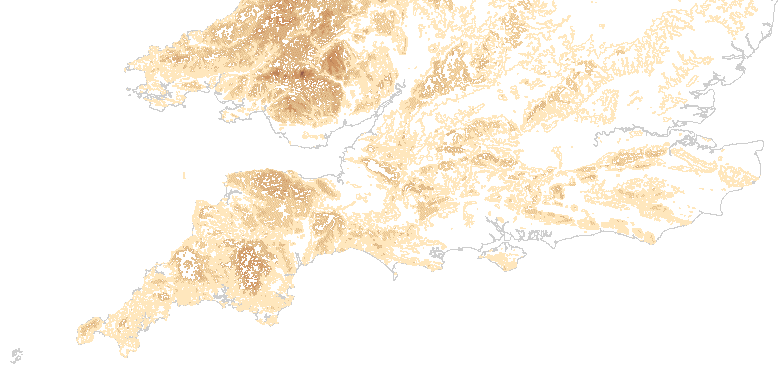
Figure 1.0-1: Contour map of study area
'High-probability statements covering a broad range of phenomena are the aim of science, not empirical observations which can be destroyed by the citation of a single empirical case to the contrary.' (Binford 1968, 20). '... once a proposition has been advanced ... the next step is to produce a series of testable hypotheses which, if verified against independent empirical data, would tend to verify the proposition.' (Binford 1968, 17).

Figure 1.0-1: Contour map of study area
This research was prompted by a desire to investigate the broad scheme of mortuary process and ritual for the whole of the prehistoric period in Southern Britain over 3500bc-AD43, and the thinking that underlay the traces of action that remain. It began with nine propositions which related to attitudes to disposal of the dead. Only a few of these might have been classed from the outset as high-probability statements. Their purpose was to provide a conceptual start to the research, and a point from which to define the independent empirical data needed to test hypotheses in their support. The nine were:
These initial propositions are reviewed in the final phase of the research. Fourteen propositions finally emerged for testing in a more structured environment developed in the course of the research.
The research attempts to reveal the thought processes of the prehistoric peoples of Southern Britain as they carried out the most inexorable human activity, disposal of the dead. The task is beset with risks, some known and some exposed as the method progresses. Despite this, and given that the research method has been designed to move as close to the evidence as possible at every stage, there appears to be many statements that can now be made with reasonable confidence about attitudes to disposal of the dead in Southern Britain over a very long period of prehistory which perhaps could not be so well asserted before. The work has not set out to overturn a particular thesis advanced by others, nor to advance a preconceived theory. The results appear to offer support to many ideas previously advanced in studies of individual sites, over smaller time segments or smaller geographical areas within the frame chosen. In addition they provide a comprehensive survey of the continuities and discontinuities of practice and belief over the whole of prehistory of this area at many levels, attempting to explain them from the archaeological record, and in the context of anthropological theory.
© Internet Archaeology/Author(s)
University of York legal statements | Terms and Conditions
| File last updated: Wed Nov 7 2001